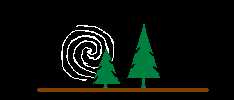This spectacular comet is even brighter than predicted and is easy to find! About an hour after sunset, on a clear night, look in the west. Comet C/2023 A3 Tsuchinshan-ATLAS will be not too far above the horizon and just a hair to the south (left) of where the Sun set. It can be seen faintly in the darkness with your naked eyes, or more brightly in binoculars. Its core looks like a somewhat fuzzy star, and its amazingly long tail rises steeply upwards, tilted a bit toward the south.
The easiest way to see the comet is to attend the star party at the railway museum! We’ll point it out to you.
Another way to find the comet easily is to download the freeware Stellarium for your phone. Click the magnifying glass in the upper right of the display, then select “Browse… Object Type… Comet,” and then, “C/2023 A3 (Tsuchinshan-ATLAS).” Raise your phone to the sky, then follow the arrow until it is pointing directly at the comet.
For a more old-school method, skip the phone. In the West, you will see one or two especially bright stars. If you see two, the brighter one is Venus. Venus is actually a planet and will likely set before it can be much help, so we’ll base our directions on the other, not-quite-so-bright star. That is Arcturus, the brightest actual star in that part of the sky. The comet is currently above and to the south (left) of Arcturus. Spread the thumb and fingers of your left hand as far apart as you can. If you place the tip of your left thumb over Arcturus, the comet will be about as far south as the tip of your left pinky, but about as high as the tips of your other fingers.
That bit about finding the comet by the spread of your hand works in the middle of October, 2024. The later you look after that time, the higher and further south (left) the comet will be. As it climbs higher, it will set later and in a darker sky, making it easier to see. But, as time passes, it will move further from the Sun and so reflect less sunlight, becoming dimmer and harder to see. On the whole, it is expected to become increasingly difficult to see with one’s naked eyes, but there should still be opportunities to see it in binoculars. If you miss it now, you may miss if forever, as their is some speculation that it may be ejected from our solar system on its journey away from Earth. But, more bets say it will return in 80,000 years, so plan to see it then.






